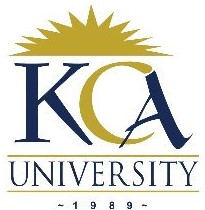
UNIVERSITY EXAMINATIONS: 2017/2018
EXAMINATION FOR THE DEGREE OF BACHELOR OF SCIENCE IN
INFORMATION TECHNOLOGY/ BACHELOR OF BUSINESS IN
INFORMATION TECHNOLOGY/ BACHELOR OF SCIENCE IN
APPLIED COMPUTING
BBIT 102/ BAC 1101/ BIT1109: COMPUTER ORGANIZATION &
ARCHITECTURE, COMPUTER ORGANISATION & APPLICATIONS
FULLTIME/PART TIME/DISTANCE LEARNING
DATE: APRIL, 2018 TIME: 2 HOURS
INSTRUCTIONS: Answer Question One & ANY OTHER TWO questions.
QUESTION ONE [30 MARKS]
a) Differentiate between RISC and CISC (6 Marks)
b) What, in general terms, is the distinction between computer organization and computer
Architecture? (4 Marks)
c) What are the four main functions of a computer? (4 Marks)
d) Monitors can either be of CRT (Cathode Ray Tube: like the television type) type or LCD
(Liquid Crystal Display:flat screen like laptop)type. What advantages and disadvantages
does each of these provide?
(6 Marks)
e) Describe briefly following malware
i) WORM
ii) Trojan Horse (4 Marks)
f) Mention the four generic access methods usually present in a computer system.
(4 Marks)
g) What is a hardware interrupt? (2 Marks)
QUESTION TWO [20 MARKS]
a) Define pipelining in CPU architecture. (2 Marks)
b) What do the following acronyms mean in disk controllers (6 Marks)
i) SCSI
ii) IDE
iii) SATA
QUESTION THREE [20 MARKS]
a) Perform the following operations(showing your workings)
i) Hexadecimal :B47F+A29C (4 Marks)
ii) Binary: 101 x 111 (2 Marks)
b) Define word length (2 Marks)
c) What are the steps required for a superscalar processor to process the instruction?
(4 Marks)
d) Distinguish between a parallel port and serial port (4 Marks)
e) In computer performance explain what you understand by these terms, giving a definition
and an example for each.
(i) Latency (2 Marks)
(ii) Throughput. (2Marks)
QUESTION FOUR [20 MARKS]
a) Distinguish between a compiler and an interpreter giving an example of each
(4 Marks)
b) Describe SIX capabilities of a spreadsheet such as Ms Excel (6 Marks)
c) List FOUR topologies in networks (4 Marks)
d) Explain the virtual memory. (2 Marks)
e) What advantages do database management systems provide to organisation?
(4 Marks)
QUESTION FIVE [20 MARKS]
a) What risks do organization face under virus attack (4 Marks)
b) Explain the computing booting process (4 Marks)
c) Differentiate between synchronous buses and asynchronous buses. (2 Marks)
d) Describe FOUR access methods on storage devices (4 Marks)
e) What are the three key concepts on which the Von Neumann Architecture is based on?
(6 Marks)
